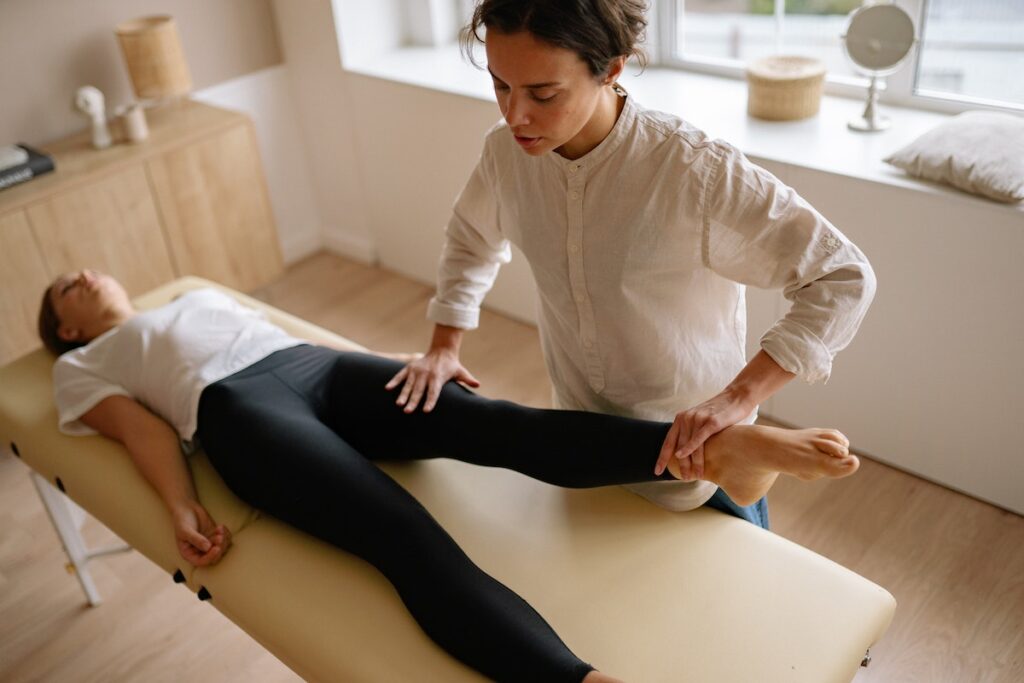Introduction
Ankle pain is a common complaint that affects people of all ages and lifestyles. The ankle joint plays a crucial role in supporting body weight and facilitating movement, making it susceptible to injuries and various medical conditions. Ankle pain can range from mild discomfort to severe pain, affecting daily activities and mobility. In this comprehensive 3000-word article, we will explore the causes, symptoms, diagnosis, treatment options, and preventive measures for ankle pain.
Section 1: Anatomy of the Ankle
Understanding the anatomy of the ankle is essential for comprehending the sources of ankle pain. The ankle joint is a complex structure that connects the lower leg bones (tibia and fibula) to the foot bones (talus and calcaneus). The joint is stabilized by ligaments, tendons, and muscles that allow for movement while providing stability and support.
Section 2: Common Causes of Ankle Pain
Ankle pain can result from various factors, including:
- Ankle Sprains: Ligament injuries due to sudden twisting or rolling of the ankle, commonly occurring during sports or uneven surfaces.
- Fractures: Broken bones in the ankle joint or nearby areas due to trauma or impact.
- Tendinitis: Inflammation of the tendons that attach muscles to the bones in the ankle.
- Achilles Tendonitis: Inflammation of the Achilles tendon, which connects the calf muscles to the heel bone.
- Osteoarthritis: Degeneration of the ankle joint cartilage, leading to pain and stiffness.
- Gout: A form of arthritis caused by the buildup of uric acid crystals in the ankle joint.
- Rheumatoid Arthritis: An autoimmune condition that can affect multiple joints, including the ankle.
- Tarsal Tunnel Syndrome: Compression of the tibial nerve as it passes through the tarsal tunnel, leading to pain and tingling in the ankle and foot.
- Stress Fractures: Tiny cracks in the ankle bones due to repetitive stress, often seen in athletes and dancers.
Section 3: Symptoms of Ankle Pain

Ankle pain can manifest with various symptoms, depending on the underlying cause and severity. Common symptoms of ankle pain include:
- Pain: Dull, aching, or sharp pain in the ankle, which may worsen with movement or bearing weight.
- Swelling: Visible or palpable swelling around the ankle joint.
- Bruising: Discoloration or bruising around the ankle area due to blood vessel damage.
- Instability: Feeling of instability or weakness in the ankle, making it challenging to bear weight or walk.
- Stiffness: Difficulty moving the ankle joint due to pain or inflammation.
Section 4: Diagnosis of Ankle Pain
Accurate diagnosis is crucial for determining the underlying cause of ankle pain and guiding appropriate treatment. The following methods are commonly used for diagnosis:
- Medical History: The healthcare provider will inquire about the patient’s symptoms, medical history, and any recent injuries or activities that may have contributed to the ankle pain.
- Physical Examination: A thorough examination of the ankle, assessing range of motion, tenderness, swelling, and signs of inflammation.
- Imaging Studies: X-rays, MRI, or CT scans may be conducted to visualize the ankle’s internal structures and detect any abnormalities, fractures, or degeneration.
- Ultrasound: Ultrasound imaging can provide real-time visualization of soft tissues, such as tendons and ligaments.
Section 5: Treatment Options for Ankle Pain

Treatment for ankle pain depends on the underlying cause, the severity of the condition, and the patient’s overall health. Common treatment options include:
- I.C.E. Therapy: Rest, ice, compression, and elevation can help reduce pain and swelling in the acute phase of ankle injuries.
- Immobilization: Wearing a brace, splint, or cast can provide support and stability to the injured ankle during the healing process.
- Pain Medication: Over-the-counter pain relievers, such as acetaminophen or nonsteroidal anti-inflammatory drugs (NSAIDs), can provide short-term relief from pain and inflammation.
- Physical Therapy: Targeted exercises and stretches can help improve ankle strength, flexibility, and stability.
- Ankle Brace or Support: Wearing an ankle brace or support during physical activities can help prevent further injuries and provide added stability.
- Corticosteroid Injections: Injections of corticosteroids into the ankle joint can help reduce inflammation and alleviate pain.
- Surgery: In severe cases, surgical intervention may be necessary to repair ligament tears, fractures, or correct structural abnormalities in the ankle.
Section 6: Preventive Measures for Ankle Pain
While some instances of ankle pain may not be preventable, several lifestyle choices and precautions can help reduce the risk of developing ankle injuries:
- Proper Footwear: Wear appropriate footwear for different activities, providing adequate support and cushioning for the ankles.
- Strengthen Ankle Muscles: Engage in exercises that strengthen the muscles around the ankle, improving stability and reducing the risk of sprains.
- Warm-Up and Stretch: Warm up before physical activities and engage in stretching exercises to prepare the muscles and joints for movement.
- Avoid Overexertion: Gradually increase the intensity and duration of physical activities to avoid overexertion and reduce the risk of stress fractures.
- Maintain Proper Foot Position: Be mindful of foot positioning during physical activities to reduce the risk of twisting or rolling the ankle.
- Balance Training: Incorporate balance and proprioceptive exercises into your fitness routine to enhance ankle stability.
Section 7: When to Seek Medical Attention
Ankle pain should be promptly evaluated by a healthcare provider, especially if it is severe, persistent, or accompanied by other concerning symptoms.
- Seek medical attention if the pain is interfering with daily activities or impacting mobility.
- Consult a healthcare provider if there is significant swelling, bruising, or instability in the ankle, as these may indicate a severe injury.
Conclusion
Ankle pain can be a challenging and debilitating condition, affecting the ability to perform everyday tasks and participate in physical activities. Understanding the causes, symptoms, and preventive measures for ankle pain is crucial for maintaining ankle health and reducing the risk of injuries. By implementing preventive strategies, maintaining proper foot hygiene, and adopting a proactive approach.


